 There is no shortage of Christmas films. From "It's a Wonderful Life" to "Elf" there is a Christmas film that ought to suit everyone. But what if one is looking for an Advent film? I think I have found one in I Am Legend.
There is no shortage of Christmas films. From "It's a Wonderful Life" to "Elf" there is a Christmas film that ought to suit everyone. But what if one is looking for an Advent film? I think I have found one in I Am Legend.On the traditional church calendar, Advent is the season that leads up to Christmas. As the name suggests, Advent anticipates the arrival of Christ. It looks back to the birth of Christ and looks forward to the return of Christ. A reading of the texts for the Advent season makes it clear that Advent is less sentimental and more realistic than the traditional, commercialized American observance of Christmas. Advent is not about happy endings, but it is about hope. Advent is not shiny and bright. Rather, Advent admits that are shadows and darkness, but the light of God is breaking into the darkness.
For all of these reasons, I Am Legend is the perfect Advent film. In the following review I am going to spoil the plot. So stop reading now and go see the movie. . . .
Alright, now I am assuming that you've seen the movie. Let's continue. This movie is thick with themes. I am amazed at how all these various elements can be developed without stepping over each other. Perhaps that is possible in a story that focuses on a single, lonely individual. The best way for me to organize my comments is to draw out each theme.
Loneliness. Will Smith's portrayal of Lt. Col. Robert Neville is outstanding. As far as he knows, he is the last man on earth. Smith is able to balance Neville's discipline and focus on finding a cure for the Krippen Virus with his fragile state of mind. When Neville enters into conversation with Sam, his dog, and the mannequins at the video store it is humorous, but not ridiculous. In a later scene, Neville is begging a mannequin to talk back to him. It is reminiscent of Tom Hank's interaction with Wilson, the soccer ball in Castaway.
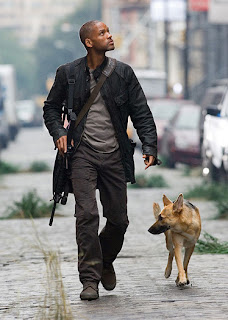 Neville is sending out a lonely invitation to any who can receive his radio broadcast. For three years he faithfully appears at a pier at high noon waiting for anyone who will accept his invitation of food, shelter, and protection.
Neville is sending out a lonely invitation to any who can receive his radio broadcast. For three years he faithfully appears at a pier at high noon waiting for anyone who will accept his invitation of food, shelter, and protection.Rescuer and Savior. Neville is not a post-apocalyptic survivalist along the lines of Mad Max or even Omega Man [The opening sequence of Neville and Sam hunting deer in Times Square from the red and white Mustang is an homage to Omega Man, an earlier version of the story. You probably knew that already, right?]. He has a duty and a mission. Neville is heroic because he is a guardian. He has resolved not to give up on finding a cure for the Krippen Virus. His station is Ground Zero and he will not leave it until is duty is accomplished. Even in his encounters with the mutated Dark Seekers, Neville is compassionate. His goal is not their destruction, but he ultimately seeks a way of saving them. However, Neville's efforts to save others are often frustrated. Neville struggles to save his family from the quarantine of Manhattan, he is successful but they are immediately killed in an accident resulting from the extreme, anxious measures of the military. Throughout the movie I wondered if and when Neville would break and lose hope.
The God Question. Smith has compared his role in the film to Job. That's a great comparison even though Job and Neville come out a different place on their argument with God. For Neville, God is simply not there. When another survivor, Ana, tries to convince Neville that God has a plan, he refuses to accept it. His rejection of God is not simply scientific, it is also the anger of a man who has seen the destruction that humanity can wreak. What seems to keep Neville going is his faith in humanity, at this point himself, to make right its wrong.
Anna is still convinced that God is working in everything for good. Neville can only accept it during the film's climax when all the right elements come together and the sign of the butterfly pulls it all together. [By the way, butterflies are all over the film]. Finally, Neville is willing to accept that a higher power is at work to save humanity. As he tells Anna, "I am trying to listen."
 Light and Darkness. Even though Neville is reluctant to bring God into the story, he does see his struggle as a conflict between Light and Darkness. This is the overarching theme for the entire film. Neville attempts to live his life as normally as possible in the daylight. Nighttime, however, is fearful. During the night, the Dark Seekers roam about seeking human blood.
Light and Darkness. Even though Neville is reluctant to bring God into the story, he does see his struggle as a conflict between Light and Darkness. This is the overarching theme for the entire film. Neville attempts to live his life as normally as possible in the daylight. Nighttime, however, is fearful. During the night, the Dark Seekers roam about seeking human blood.Neville shares his driving philosophy with Ana. He is inspired by a legend about Bob Marley. Marley vowed never to take a day off from injecting light into the world since those who would bring darkness never rest. Much of the subtext of the film is revealed in this conversation.
Left on its own, that sentiment could be basically humanitarian rather than particularly spiritual. Combined with Neville's epiphany and Anna's faith, the theme takes on another dimension. God is at work to bring light into darkness. Perhaps Neville is God's agent and his blessing and commission came from the prayer his wife blesses him with in the helicopter shortly before her departure. [This was one of the most realistic prayers depicted in a movie].
The film closes with Anna saying "Light up the darkness." That's a great message for Advent.

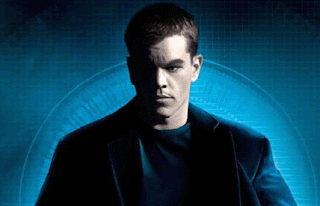

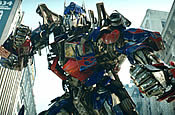


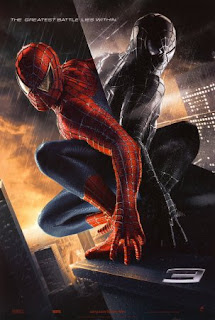


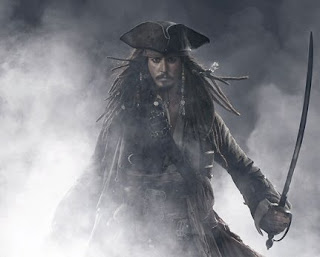 I admit that I did not watch the first Pirates movie very closely. I cannot recall any of the second film. So, one-quarter of the way through the latest Pirates film, particularly in the scenes with Johnny Depp and the ship in the desert, I turned to my wife and friends and asked, “What am I missing? I don’t get this.” Sadly, they couldn’t help me and it wasn’t their fault.
I admit that I did not watch the first Pirates movie very closely. I cannot recall any of the second film. So, one-quarter of the way through the latest Pirates film, particularly in the scenes with Johnny Depp and the ship in the desert, I turned to my wife and friends and asked, “What am I missing? I don’t get this.” Sadly, they couldn’t help me and it wasn’t their fault.


